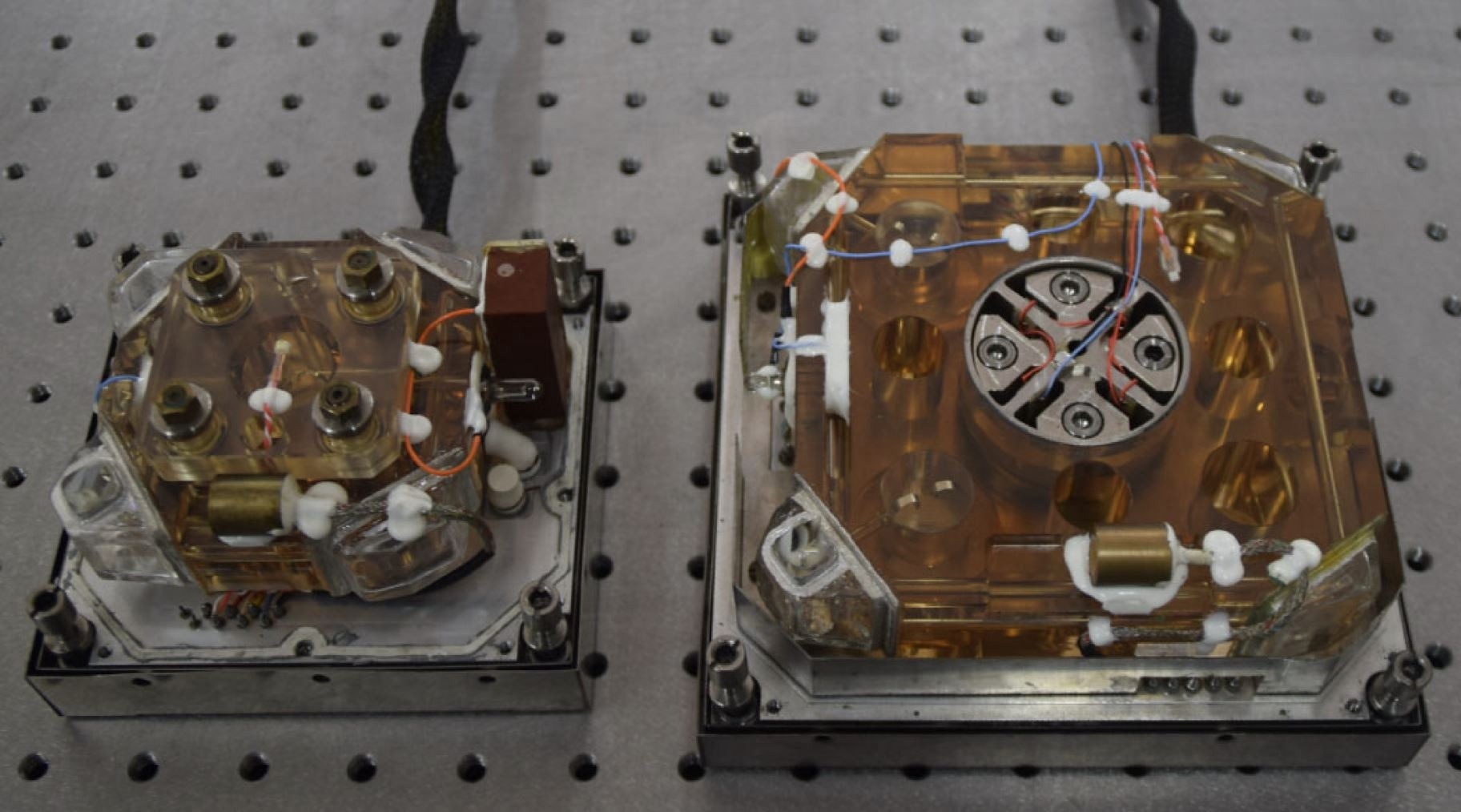In a paper published in the journal Sensors, researchers investigated an asymmetric frequency stabilization method to stabilize a laser gyroscope's self-biasing state. The self-biasing gyro offers minimal losses, no adverse effects of biasing method, and zero lock-ins; therefore, it can enhance the strategic precision of navigation systems.

Study: Study of the Steady-State Operation of a Dual-Longitudinal-Mode and Self-Biasing Laser Gyroscope. Image Credit: Liu, J. et al.
What is a Gyroscope?
Gyroscopes are devices that measure and maintain an object's orientation in inertial space at any given time. They are used in compasses, automatic pilots on aircraft and ships, and inertial navigation systems on satellites, space launch vehicles, and ballistic missiles.
Significance of a Laser Gyroscope
A ring laser gyroscope is a precision instrument that monitors angular or directional changes using a laser beam flowing in two directions.
A laser gyroscope is an integral component of an inertial guiding and navigation system. It offers a quick starting time, a wide dynamic range, and a consistent scaling factor. The ring laser serves as the central component of the laser gyro.
Helium-Neon (He-Ne) gas is typically used as the gain medium in the ring laser of the laser gyroscope to preserve the low power consumption, narrow band, and high stability.
Various studies have revealed that when the dual-longitudinal mode in a prism laser gyroscope with an optical cavity length of 0.47m is operated at a specific asymmetric location in the gain profile, the lock-in is eliminated, and a self-biasing state is established. This lets the gyroscope determine the celestial component of the Earth's rotation angular velocity.
How is Self-Biasing Achieved?
Prior studies have revealed the following characteristics of self-biasing:
- The dual-longitudinal mode has the same frequency coupling and linear polarization effect
- The two longitudinal modes have a frequency gap of around 640 MHz
- The intensity of oscillations in the weak and strong modes is proportionate
The self-biasing state is formed and stabilized after the above requirements are fulfilled. In addition, the traditional polarization orthogonality-based frequency stabilization technique cannot be used as the two modes generally have the same polarization. Therefore, steady and continuous self-biasing operation in a prism laser gyroscope has not been achieved.
Investigating Dual-Longitudinal Mode Asymmetric Frequency Stabilization Technique to Achieve the Self-Biasing State of a Laser Gyroscope
Researchers investigated the impact on the ring laser's intensity tuning curve's profile with the plasma dispersion functions and the Lamb theory. In addition, this study looked at how a laser gyro's intensity tuning curve is affected by inflation pressure, the ratio of Ne isotopes, and frequency coupling.
The physical model of the ring laser's intensity tuning curve was developed. The intensity tuning curve profiles were simulated using isotope ratios of Ne22 and Ne20 of 7:3 and1:1, and inflation pressures of 450 Pa, 400 Pa, and 350 Pa.
The mixture of Ne27 and Ne20 was theoretically examined. The laser gyroscope's intensity tuning curve modulation experimental system was designed to validate the theoretical study. The process for regulating the intensity tuning curve's profile was examined.
Experiments at various pressures and isotope ratios were used to validate the curve profiles. Lastly, a preliminary evaluation of the proposed frequency stabilization approach was conducted using a prism ring laser gyroscope with an optical length of 0.47 m.
Important Findings of the Study
It is possible to stabilize the self-biasing condition in a prism laser gyro by carefully controlling the intensity tuning curve's profile. Theoretical and experimental findings indicate a strong correlation between the Ne isotopes' ratio, composition, and inflation pressure and the intensity tuning curve's profile. These factors can also modify the intensity tuning curve's profile.
The experimental findings are in accordance with the theoretical interpretation. However, there were minor differences in the results following each inflation since the isotope ratio in natural Ne is not constant.
The curve profile was steadier, and the increment was moderate below 400 Pa. The laser tube would be extinguished during tuning at pressures below 350 Pa.
The frequency discrimination signals are accurate and ideal for frequency stability after profile modification. Therefore, the stable functioning of the self-biasing laser gyroscope and the double-longitudinal mode can be achieved by modulating the intensity tuning curve profile.
This study establishes the foundation for implementing a special frequency stabilization technique, in which double-longitudinal modes are stabilized at the asymmetrical point of the gain curve, to induce a self-biasing state laser gyroscope.
However, the frequency stabilization method is still in the research stage. As there are two major issues: First, the profile's control accuracy must be increased further to meet the stringent requirements of self-biasing. Second, the profile's stability must be increased, particularly for extended operations.
Reference
Liu, J., Weng, J., Jiang, J., Liu, Y., Jiao, M., Zhao, K., & Zheng, Y. (2022). Study of the Steady-State Operation of a Dual-Longitudinal-Mode and Self-Biasing Laser Gyroscope. Sensors. https://www.mdpi.com/1424-8220/22/16/6300/htm
Disclaimer: The views expressed here are those of the author expressed in their private capacity and do not necessarily represent the views of AZoM.com Limited T/A AZoNetwork the owner and operator of this website. This disclaimer forms part of the Terms and conditions of use of this website.